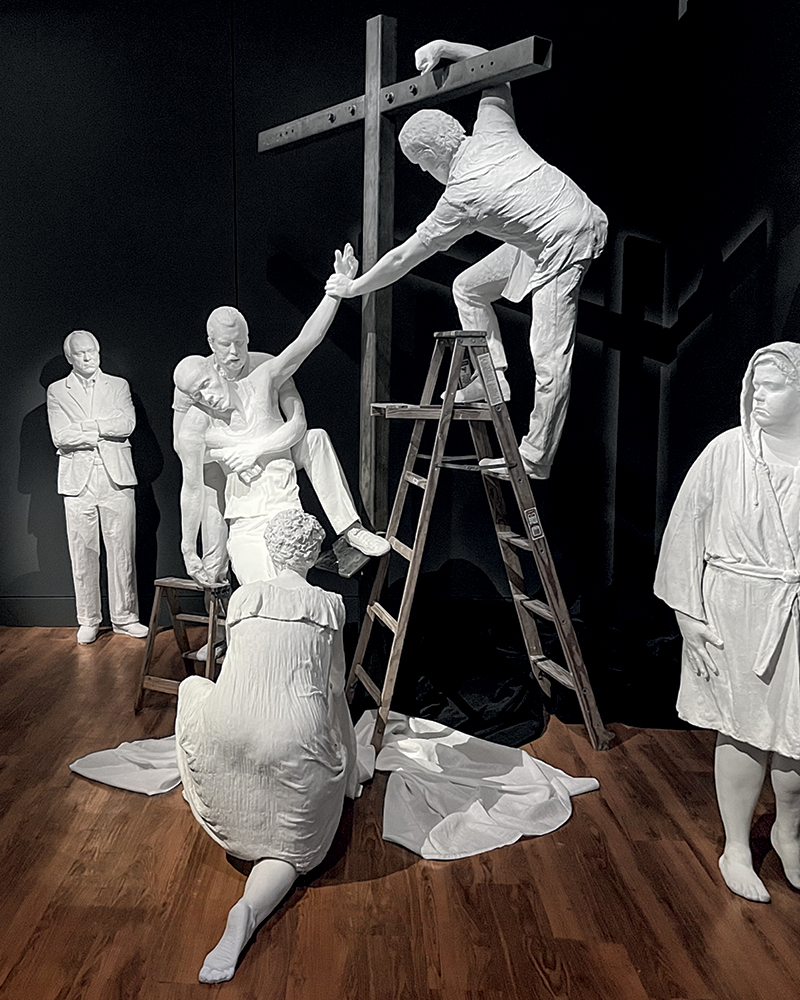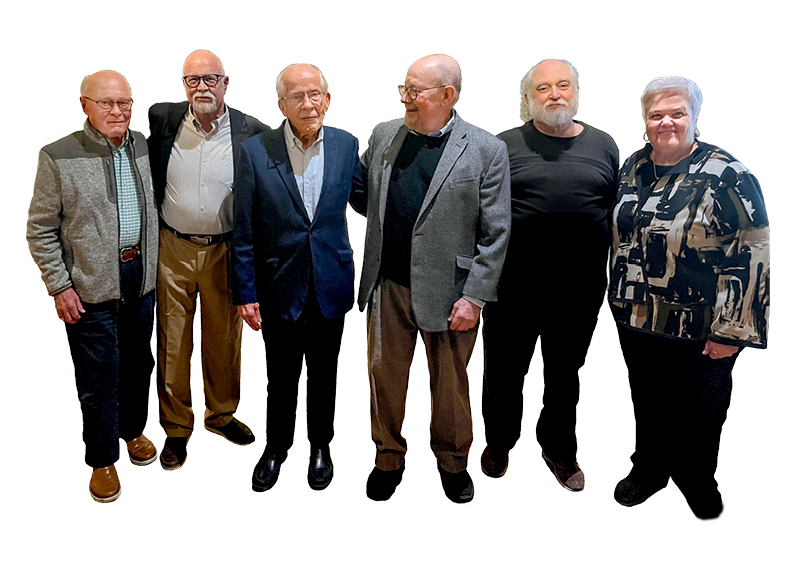Descent from the Cross
 Professor emeritus revives compelling sculpture for a new audience at Museum of the Bible
Professor emeritus revives compelling sculpture for a new audience at Museum of the Bible
All four Gospels describe one of Jesus’ most thoroughly human moments: when His lifeless body is taken down from the cross. Often referred to as the “descent from the cross” or the “deposition of Christ,” the scene has been depicted by artists from Rembrandt to Rubens. In addition to the inherent emotion and drama of the moment, the mystery of the descent also makes it appealing to artists.
“The Gospels offer several accounts of the descent, but they’re not mirror images,” Ted Prescott, professor emeritus of art, explains. “This leaves space for artists to imagine, to construct.”
In 1985, Prescott, who founded Messiah’s studio art program, joined the artistic tradition of entering that space, drawing on his skills as a gifted sculptor, as well as on his relatively newfound personal faith. Little did he know how his rendering of Christ’s descent would initially draw together members of the Messiah community — and, 40 years later, thousands more.
Coming together to interpret the moment
In his original conception of the piece, Prescott says, “I wasn’t trying to make a historical recreation of the scene. Instead, I wondered, what would it look like if, in my day, people condemned to death were crucified?”
That question informed Prescott’s decision to have the figures in modern clothing —
t-shirts, pants, a sundress, and even a suit. And it motivated his decision to ask those near to him to serve as models. Six Messiah colleagues spent several grueling hours permitting Prescott to make plaster casts of them.
“You had to hold a pose for a very long time,” recalls Professor Emeritus Paul Nisly, whose cast represented Christ and who served at the time as chair of the Language, Literature and Fine Arts department. “I entered into the experience mind, body and soul.”
Prescott used those casts to create six life-size figures — of Jesus; Mary, His mother; Joseph of Arimathea; two witnesses; and one other character — surrounding a towering, adjustable metal cross. Over the next 25 years, many churches and colleges displayed Prescott’s work, drawing viewers from around the region. Eventually, though, Prescott sensed the piece had run its course and retired it, packing it away into storage. But, to his surprise and delight, it didn’t remain there.

Renewed interest, intersecting audiences
Earlier this year, two decades after “Descent from the Cross” had last been exhibited, the Museum of the Bible in Washington, D.C., contacted Prescott. The Museum was creating an exhibit of collected pieces all focusing on that moment of Christ’s descent.
Amy Van Dyke, the museum’s lead curator of art and exhibitions, explains, “Ted Prescott was brought to my attention through Sandra Bowden, of Bowden Collections. She has known of his work for many years and recognized early in our process that his installation would be a highlight of the exhibition.”
So, Prescott; his wife, Catherine, also a gifted artist and former Messiah professor; and others began the laborious restoration process. As they worked, Prescott noticed that the piece took on new life.
“In seeking to simply clean it up, we transformed the piece,” he says. “The material had originally been more textured and duller — it’s smoother and brighter now than it was. It has a bit of a different spirit.”
This past spring, thousands of visitors to the museum experienced that refreshed work.
The exhibit also brought together the Messiah community. At a University-sponsored reception in April, several of those who served as models, as well as Messiah faculty members, alumni and students gathered with Prescott to view the piece together.
“It was meaningful to come together to recognize the distinction and relevance of Ted’s work, especially in a national venue like the Museum of the Bible,” notes former university president Kim Phipps. “His impact at Messiah and in the Christian visual arts community cannot be overstated. This particular piece issues a powerful invitation to enter one of Jesus’ most vulnerable moments — with the gift of doing so with others by our side.”
— Kristine Frey ’07
Photo caption:
Artist’s models reunited
At a reception held April 7 at the national Museum of the Bible, several of the original models for “Descent from the Cross” reunited. Pictured (l-r): David Brandt, then academic dean (witness); Jake Thiessen, then professor of family studies (Joseph of Arimathea holding Christ); Paul Nisly, then professor of English, now professor emeritus (Christ); Ted Prescott, artist; Richard Dent, then director of ITS (helper on ladder); Linda Parkyn, then professor of Spanish (witness). Not pictured: Christine Forsythe, then professor of art; now professor emerita (Mary, Jesus’ mother).